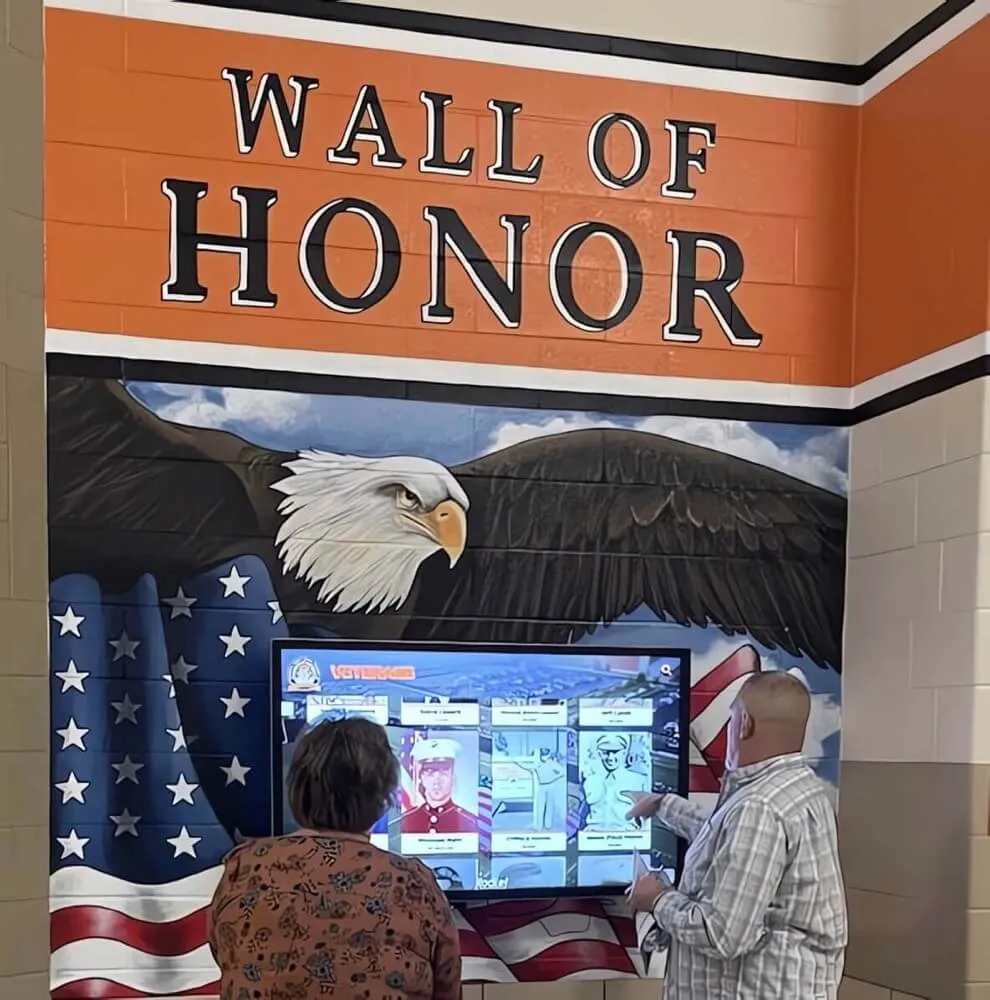Key Takeaways
Discover meaningful ways to honor fallen soldiers through memorial recognition, digital tributes, and permanent displays that preserve military sacrifice for generations.
The Sacred Duty of Remembering Fallen Soldiers
Military service members who make the ultimate sacrifice represent the highest form of dedication to country and principle. Their stories—of courage under fire, selfless protection of comrades, unwavering commitment to mission—deserve more than fading memories or forgotten names on dusty plaques.
Why Fallen Soldier Recognition Matters
Honoring fallen soldiers serves purposes that extend far beyond acknowledging individual sacrifice:
Preserving Memory and Legacy: Without intentional commemoration, the stories of fallen service members risk fading from collective memory. Recognition ensures that sacrifices made decades ago remain visible and meaningful to present and future generations who benefit from the freedoms those sacrifices secured.
Supporting Gold Star Families: For families who lost loved ones in military service, public recognition validates the enormity of their loss while demonstrating that communities understand and appreciate what their family member gave. This acknowledgment provides comfort during grief and assurance that sacrifice won’t be forgotten.
Educating Younger Generations: Many young people lack direct connection to military service or understanding of what service members face. Comprehensive fallen soldier recognition creates educational opportunities helping youth understand the real human cost of freedom and the courage demonstrated by those who serve.
Strengthening Community Values: Communities that visibly honor fallen soldiers reinforce values of service, sacrifice, courage, and patriotism. Recognition becomes a permanent statement about what the community holds sacred and how it responds to those who gave everything.
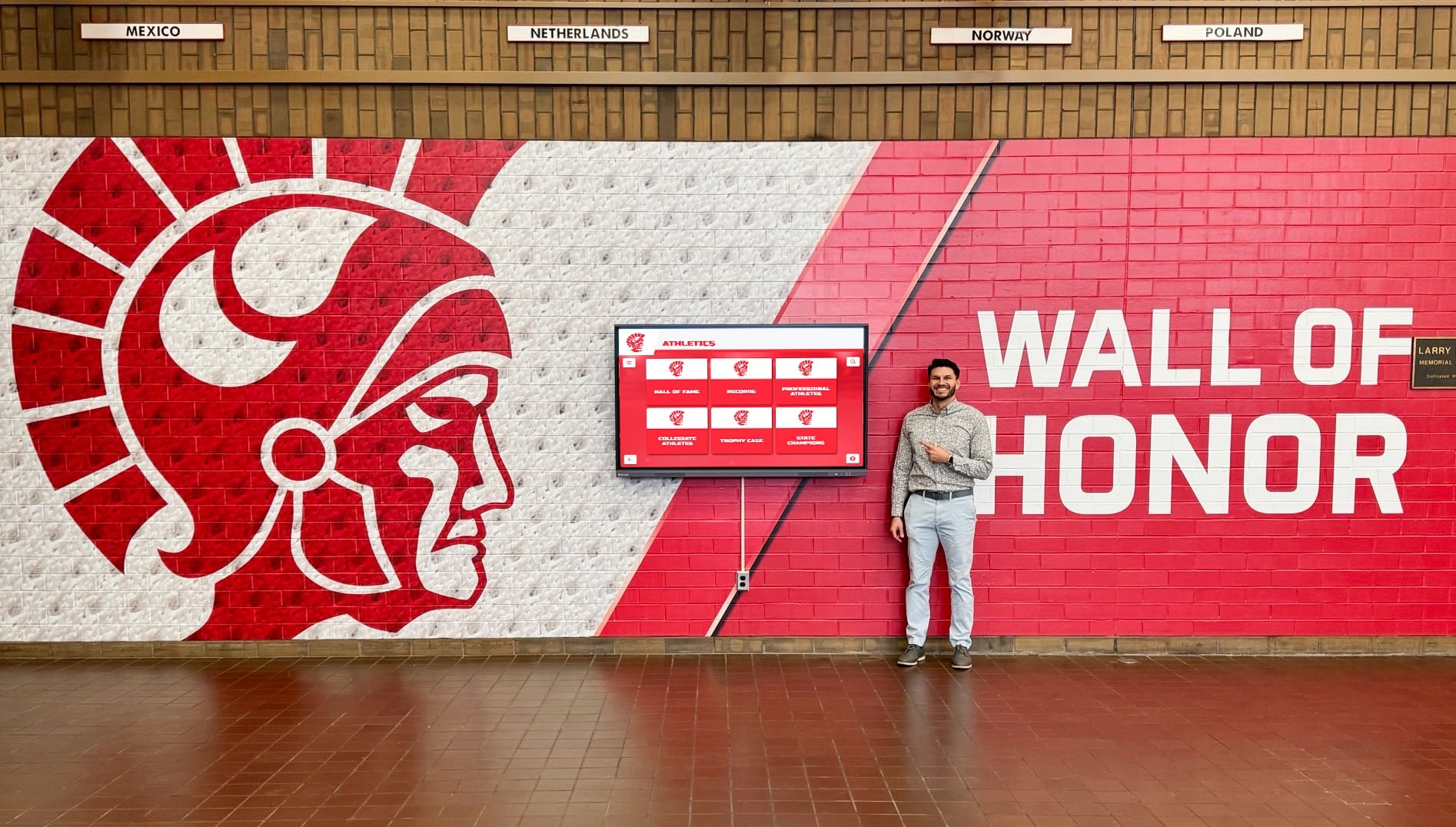
Inspiring Current Service Members: Active military personnel and veterans draw strength from knowing their potential sacrifice would be remembered and honored appropriately by grateful communities. This assurance reinforces the nobility of military service.
The Limitations of Traditional Memorials
Traditional approaches to honoring fallen soldiers—stone monuments, bronze plaques, engraved walls—carry deep symbolic meaning through their permanence and solemnity. The weight of stone and metal communicates lasting remembrance, and many families appreciate the tangibility of physical memorials they can visit and touch.
However, these conventional approaches face significant practical challenges:
Space Constraints: Physical memorials occupy finite space. As conflicts span decades and casualties accumulate, communities face painful decisions about whose sacrifice receives recognition when wall space fills. This limitation forces impossible choices between honoring Vietnam casualties or making room for recent Afghanistan and Iraq losses.
Minimal Information: Bronze plaques typically accommodate perhaps 40-60 words per person—enough for name, rank, branch, dates, and little else. This minimal information provides basic acknowledgment but fails to capture the richness of individual service experiences, personalities, or the circumstances of sacrifice. Families receive cold comfort from plaques listing bare facts while omitting the courage, character, and humanity that defined their loved ones.
High Costs Per Addition: Each new name on physical memorials requires substantial investment including engraving or casting ($150-$400), installation labor ($50-$150), and potentially expanding physical structures. These per-person costs make ongoing recognition financially challenging, especially for smaller communities or organizations with limited budgets.
Difficult Updates: Correcting errors or adding newly discovered information requires complete replacement of plaques or panels—another round of fabrication, installation, and expense. Many organizations simply leave outdated or incomplete information rather than bear the cost of updates.
Geographic Limitation: Physical memorials can only be viewed in person. Distant family members, relocated veterans, or those unable to travel cannot access recognition, limiting who can connect with fallen soldiers’ legacies.
Traditional Ways Communities Honor Fallen Soldiers
Understanding traditional recognition approaches provides context for how modern solutions enhance and extend these important practices.
Physical Memorials and Monuments
War Memorials and Cenotaphs: Many communities maintain war memorials listing fallen service members from local areas. These range from simple plaques to elaborate statues and monuments in town squares, parks, or municipal buildings. The National World War II Memorial in Washington, D.C., for example, honors the 16 million Americans who served and includes the Freedom Wall with 4,048 gold stars representing the more than 400,000 Americans who died.
Cemetery Markers and Headstones: Military cemeteries like Arlington National Cemetery provide dignified resting places with uniform white markers creating powerful visual testament to sacrifice. According to the National Cemetery Administration, the VA operates 155 national cemeteries serving veterans and eligible family members.
Memorial Walls and Tablets: Schools, community buildings, and veterans halls often feature memorial walls listing fallen service members from their institutions or communities. These permanent installations create focal points for reflection and remembrance.
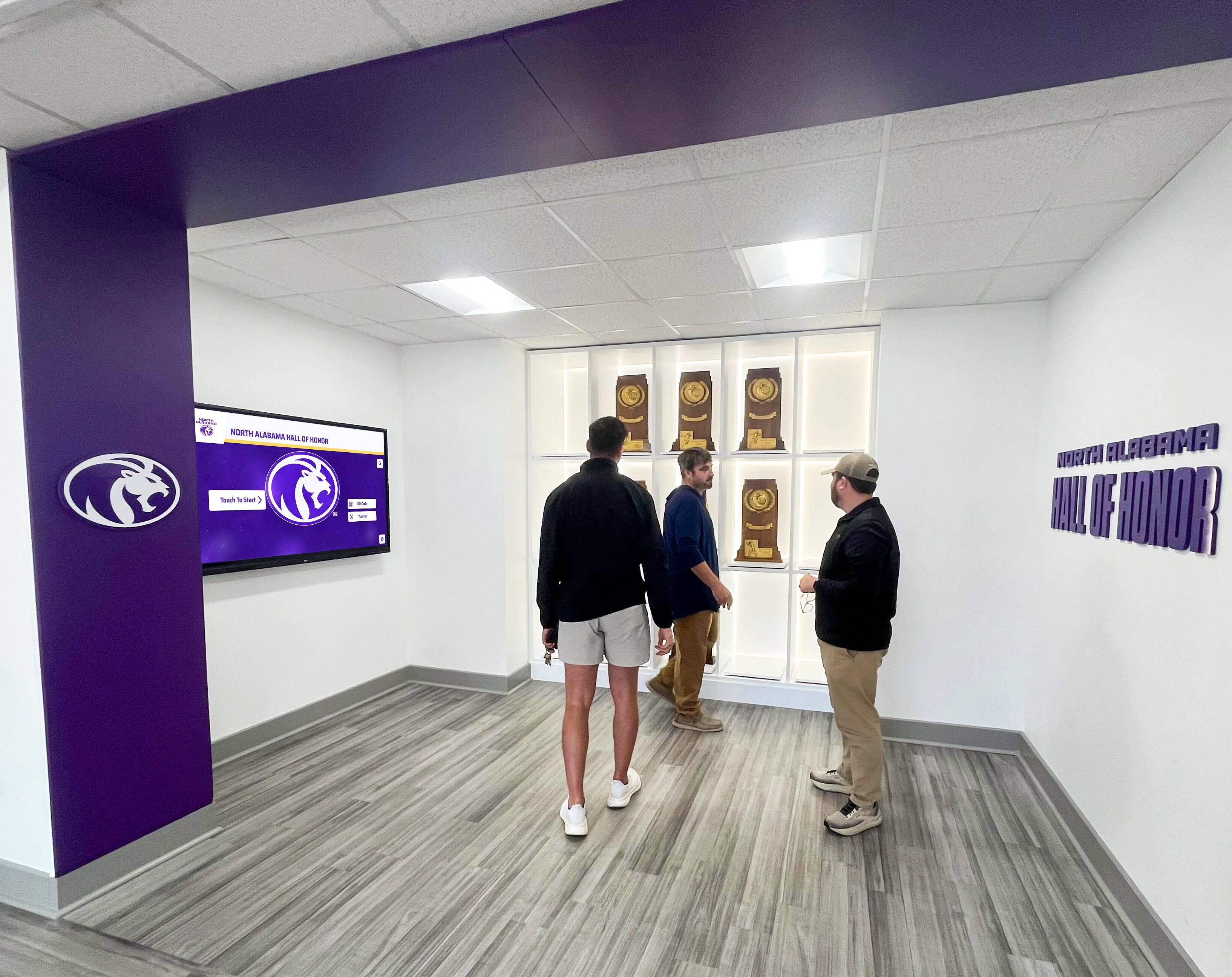
While these physical memorials serve important symbolic functions, they inherently limit how much information and how many service members can be recognized within finite physical constraints.
Annual Observances and Ceremonies
Memorial Day Commemorations: Memorial Day, observed the last Monday of May, specifically honors military personnel who died in service. According to the U.S. Department of Veterans Affairs, the National Moment of Remembrance at 3 PM local time on Memorial Day unites Americans in shared tribute. The VA hosts more than 130 Memorial Day ceremonies across national cemeteries annually.
Veterans Day Recognition: While Veterans Day (November 11) honors all who served, many communities include specific remembrance of fallen service members during Veterans Day programs and ceremonies.
Wreaths Across America: This nonprofit organization coordinates wreath-laying ceremonies at veterans’ cemeteries nationwide every December. Volunteers place wreaths on graves of fallen heroes while speaking their names aloud—a powerful act ensuring the deceased are remembered individually rather than anonymously.
Local Observances: Many communities organize Memorial Day parades, cemetery services, and recognition events that honor fallen soldiers through speeches, military honors, moments of silence, and public gatherings that demonstrate community gratitude.
Symbolic Recognition Gestures
Gold Star Families Recognition: Gold Star families—those who lost a loved one in military service—receive special recognition through Gold Star Family flags, pins, and public acknowledgment at military events and ceremonies. The Gold Star Wives of America and similar organizations provide support and ensure these families receive appropriate honor.
Poppy Distribution: The red poppy became a symbol of remembrance following World War I, inspired by John McCrae’s poem “In Flanders Fields.” The Veterans of Foreign Wars (VFW) distributes millions of poppies annually as reminders of those who died in military service.
Flag Protocols: Flags flown at half-staff honor fallen service members. On Memorial Day specifically, flags are flown at half-staff from sunrise until noon, then raised to full staff until sunset—symbolizing first mourning the fallen, then honoring their sacrifice by living freely.
Moment of Silence: Brief periods of silence at ceremonies, sporting events, and public gatherings create opportunities for reflection and remembrance of military sacrifice.
These traditional approaches remain meaningful and appropriate. Modern technology doesn’t replace them but rather enhances and extends their impact through capabilities impossible with conventional methods alone.
How Modern Technology Transforms Fallen Soldier Recognition
Digital recognition systems address every limitation of traditional approaches while preserving—and often deepening—the dignity and reverence appropriate for honoring ultimate sacrifice.
Unlimited Recognition Capacity
The most immediate advantage digital systems provide is unlimited capacity. A single interactive touchscreen display or web-based memorial can showcase comprehensive tributes for thousands of fallen service members without ever running out of space.
This unlimited capacity ensures equitable recognition across all eras and conflicts. World War II casualties receive equal prominence with Vietnam veterans. Korean War losses share equal space with recent Iraq and Afghanistan casualties. No fallen hero’s sacrifice is diminished because recognition filled up before their era, and no community faces the heartbreaking decision to exclude deserving service members due to physical space constraints.
Organizations can recognize every fallen service member with connection to their institution—alumni from every graduation year, community members from all branches and conflicts, service members from Civil War through present-day operations—without ever facing capacity limitations that force exclusions.
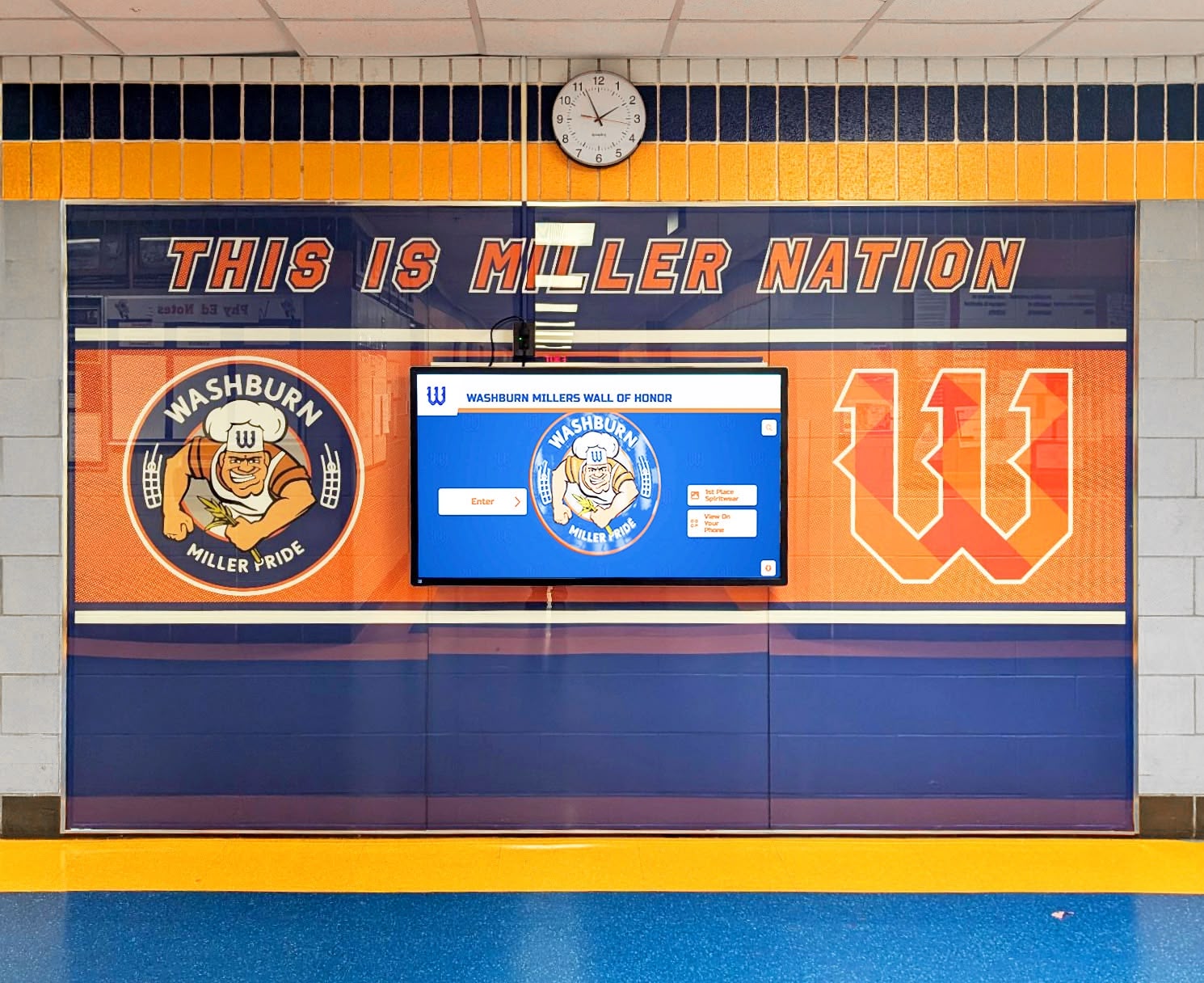
Comprehensive Multimedia Storytelling
Digital platforms transform recognition from basic name listings into comprehensive tributes celebrating complete lives and sacrifices through rich multimedia content:
Detailed Service Biographies: Instead of 50-word plaque descriptions, digital profiles support complete narratives including pre-service background and reasons for enlisting, training experiences and military occupational specialties, unit assignments and duty stations, deployment locations and combat experiences, awards and commendations received with context explaining their significance, circumstances of death and valor demonstrated, and post-death honors and recognition received.
These comprehensive biographies honor fallen soldiers as complete individuals rather than reducing them to names and dates, providing the depth of recognition families deserve.
Photographic Documentation: Multiple photographs document complete lives and service including childhood and pre-service civilian photos, basic training and military schooling images, unit photos showing fellow service members and bonds forged, deployment location photographs documenting where they served, ceremony and award documentation, and memorial services and honors following death.
Photo galleries create powerful emotional connections helping viewers understand fallen soldiers as real people who lived, loved, served, and sacrificed—not just names on lists.
Service Context and History: Digital recognition provides historical context helping viewers understand the significance of specific conflicts, battles, campaigns, and operations. A Vietnam casualty’s profile might include information about the unit they served with, major operations during their deployment period, broader context about the war and its challenges, and geographic/political circumstances of the conflict.
This contextualization helps younger generations understand the complexity and danger fallen soldiers faced, providing educational value alongside recognition.
Unit Tributes and Collective Recognition: Digital systems can feature entire unit tributes showcasing multiple casualties from single operations or battles, helping viewers understand the scale of sacrifice and connections between service members who fought and died together.
Family Submissions and Memories: Digital platforms enable families to contribute personal memories, photographs, and stories enriching recognition with intimate details and perspectives unavailable through official records. This collaborative approach ensures recognition reflects how families remember their lost loved ones, not just how military records document service.
Modern digital recognition solutions like those from Rocket Alumni Solutions enable this level of comprehensive storytelling that appropriately honors sacrifice while preserving memories for generations.
Accessibility and Remote Connection
Physical memorials can only be viewed in person. Digital fallen soldier recognition extends access worldwide through web-based platforms that complement physical installations:
Remote Family Access: Service members’ families who moved away after loss can view recognition from anywhere. Distant relatives can access comprehensive tributes remotely. Gold Star families can visit recognition virtually whenever they need connection with their lost loved one’s memory, not only during physical visits that might be rare or impossible due to distance, health, or other constraints.
Educational Integration: Schools can integrate digital fallen soldier recognition into history curricula and educational programs. Students can research individual service members for projects. Teachers can assign exploration of local heroes whose sacrifices connect abstract historical events to concrete individual stories.
Social Media Sharing: Families can share recognition with extended networks through social media, amplifying impact and ensuring broader communities learn about fallen heroes’ sacrifices. This sharing capability extends recognition reach exponentially beyond those who visit physical memorials.
Mobile Access: Smartphone-optimized digital recognition enables viewing from anywhere at any time. QR codes on physical memorials can link to expanded digital content providing depth impossible within physical space constraints.
This accessibility proves especially meaningful for Gold Star families facing geographic distance from physical memorials yet yearning for connection with their lost loved ones’ recognition and legacy.
Easy Updates and Ongoing Additions
Adding fallen soldiers to digital recognition takes minutes through cloud-based content management systems rather than weeks required for physical engraving, casting, and installation.
When communities identify previously unknown casualties through ongoing research, recognition happens immediately. When families provide additional photos, stories, or service details, content updates instantly. When errors are discovered—incorrect service dates, misspelled names, wrong unit assignments—corrections occur without costly monument replacement or re-engraving.
This easy maintenance means digital fallen soldier memorials remain accurate, current, and comprehensive rather than becoming outdated static installations frozen at their initial creation.
Veterans organizations implementing digital military recognition systems report significantly better ability to maintain current, complete tribute information compared to traditional physical approaches.
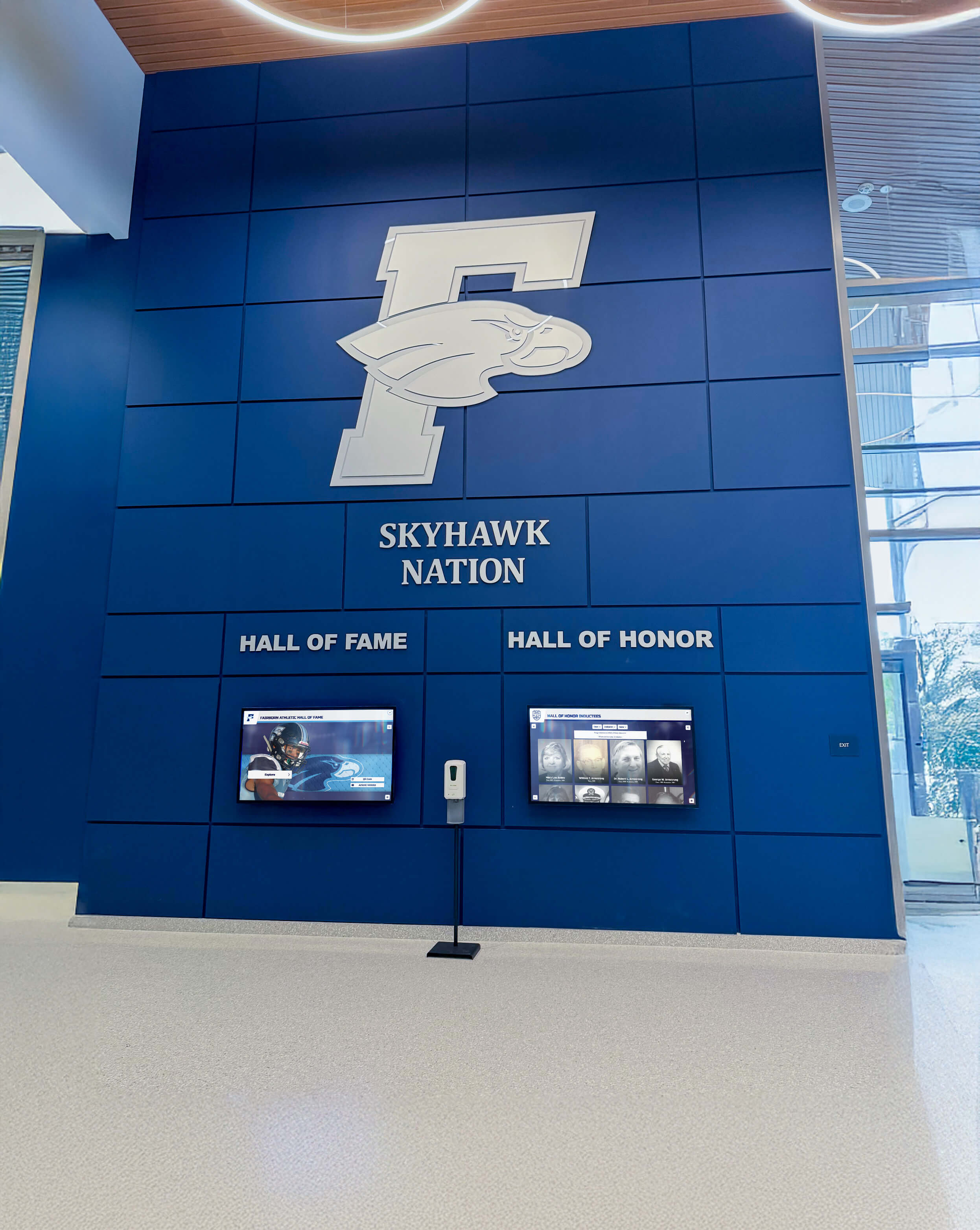
Discovery Tools and Search Capabilities
Interactive digital displays enable visitors to find specific fallen soldiers quickly and discover connections they wouldn’t encounter browsing static physical displays:
Name Search: Families or researchers can instantly locate specific service members by name, bypassing lists of hundreds or thousands of others.
Filter Capabilities: Users can filter fallen soldiers by conflict era (World War II, Korea, Vietnam, Gulf War, Afghanistan, Iraq), military branch (Army, Navy, Air Force, Marines, Coast Guard), home state or community, unit or division, rank achieved, awards received, or year of death.
Related Discoveries: After viewing one profile, visitors can discover fellow unit members, others from the same conflict, service members from their home community, or those with similar backgrounds and experiences.
These discovery tools prove particularly valuable for researchers, students, and veterans seeking information about specific individuals or groups while enabling chance discoveries that wouldn’t occur with static alphabetical lists.
Analytics and Engagement Insights
Digital systems generate valuable data revealing engagement patterns including which fallen soldiers’ profiles generate most interest, popular search terms and discovery methods, session duration indicating depth of engagement, demographic information about who accesses recognition, and peak usage periods showing when communities most actively remember sacrifice.
These insights inform content development priorities, promotional strategies, and memorial program optimization impossible with traditional displays offering no feedback about viewer engagement.
Implementing Fallen Soldier Recognition Programs
Creating meaningful recognition requires systematic approaches addressing research, selection, content development, and ongoing management.
Research and Identification
Comprehensive fallen soldier recognition begins with thorough research identifying service members deserving commemoration:
Records Research: Review organizational records, yearbooks, and historical documents identifying former students, members, or residents who died in military service. Many schools and communities lack complete documentation requiring dedicated archival research.
Military Records: Access official military records through the National Archives, Department of Defense casualty databases, and branch-specific historical records. The Defense Casualty Analysis System provides comprehensive casualty data from conflicts spanning decades.
Family Contact: Reach out to families through veterans organizations, community networks, and social media for verification, additional information, and photographs military records don’t contain. Family engagement often reveals service details and personal stories unavailable through official sources.
Community Outreach: Publicize research efforts through local media, veterans organizations, and community groups encouraging nominations and information submissions about fallen service members.
Ongoing Documentation: Recognition research should be continuous, not one-time, as new information emerges through family contact, declassified documents, or continued archival work.
This comprehensive research typically takes 6-12 months for initial implementation but creates invaluable historical documentation benefiting recognition programs and broader community heritage preservation.
Selection Criteria and Eligibility
Clear criteria ensure fair, consistent recognition decisions while communicating organizational values:
Service Connection Requirements: Organizations must define what connection to their institution or community qualifies fallen service members for recognition. Schools might recognize alumni who graduated then died in service. Communities might honor residents who lived in the area when they enlisted or whose families remain local. Veterans organizations might recognize members or those who served in specific conflicts or units.
Verification Standards: Establish documentation requirements proving service connection and casualty status. DD Form 214 discharge papers (for those who separated before death), casualty reports, death certificates with military service notation, and official records confirming service connection provide necessary verification preventing errors or false claims.
All Conflicts or Specific Eras: Decide whether recognition spans all conflicts from Civil War through present or focuses on specific eras. Most comprehensive programs recognize sacrifice across all periods, but some focus on particular conflicts most relevant to their communities or missions.
Branch Inclusivity: Recognition should honor fallen service members across all military branches—Army, Navy, Air Force, Marines, and Coast Guard—ensuring no service receives preferential recognition based on prestige or public profile.
Transparent criteria prevent confusion while ensuring consistent, fair recognition that stakeholders understand and respect.
Content Development for Fallen Soldier Profiles
Quality content transforms recognition from name lists into meaningful tributes:
Essential Information Elements include full name including nickname or preferred name, rank achieved, military branch and unit, service dates, location and date of death, circumstances of death (in appropriate detail), age at death, awards and decorations received, hometown and family information families are comfortable sharing, and burial location.
Narrative Biography: Well-written biographical narratives should describe who they were before service—family background, interests, aspirations, reasons for enlisting or commissioning, character traits and values, training and specialization, deployment history, leadership roles and responsibilities, acts of courage or extraordinary service, impact on fellow service members, and legacy and remembrance following death.
Effective biographies honor fallen soldiers as complete human beings whose lives held meaning beyond military service statistics.
Family Involvement: Whenever possible, involve families in content development. Gold Star families possess unique knowledge about their loved ones and deserve input into how sacrifice is commemorated. Family collaboration ensures recognition reflects how loved ones should be remembered while providing families comfort that tributes capture essential characteristics and accomplishments.
Appropriate Tone: Recognition should maintain dignified tone appropriate for sacred sacrifice while avoiding militaristic language that glorifies war. Content should honor courage and sacrifice while acknowledging the tragedy of young lives lost and families forever changed.
Organizations seeking guidance on creating comprehensive tributes benefit from understanding digital memorial recognition strategies that ensure appropriate honor while engaging diverse audiences.
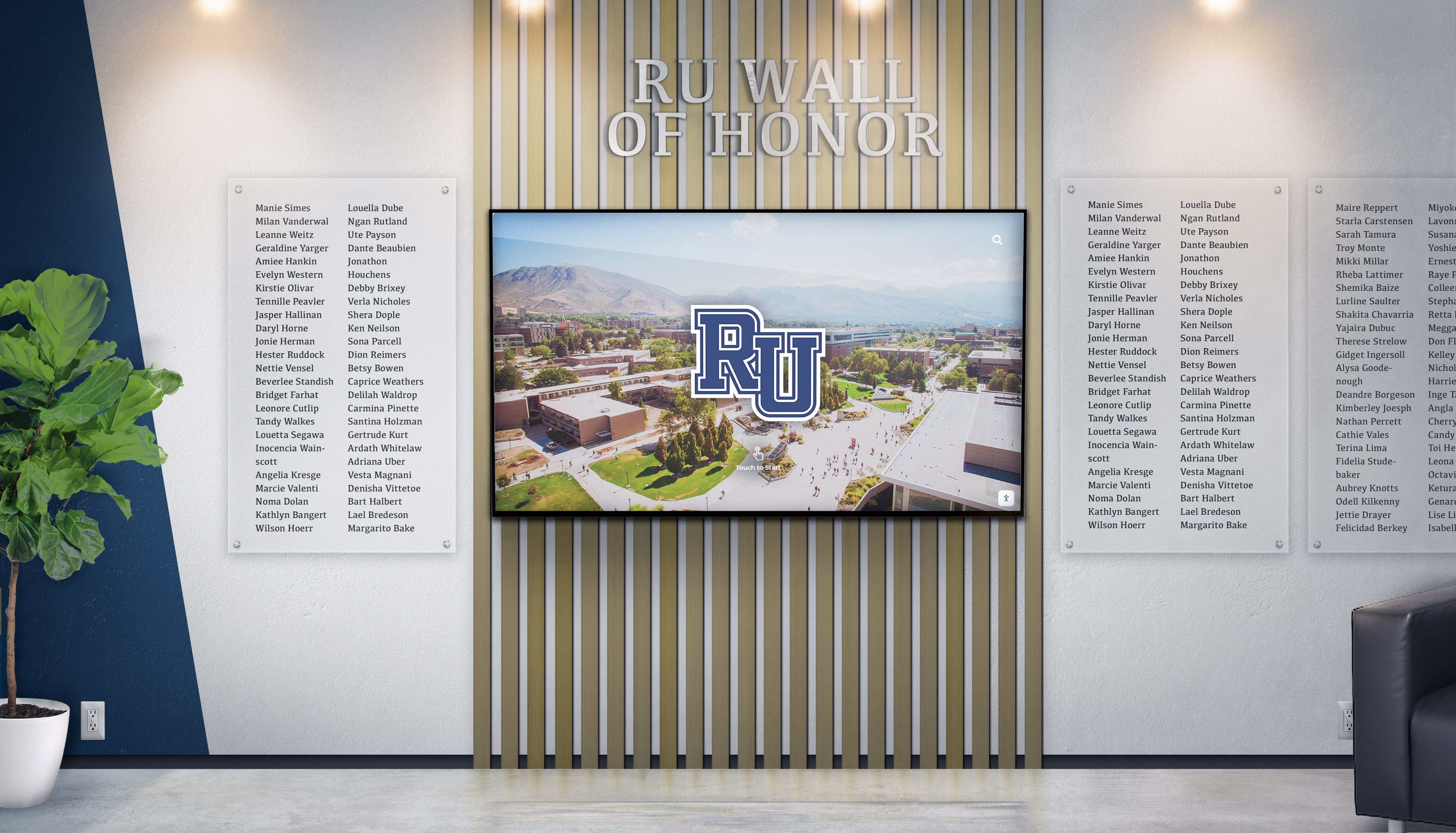
Technology Platform Selection
For organizations choosing digital recognition, careful platform evaluation ensures systems serve objectives effectively:
Essential Platform Features include intuitive content management enabling non-technical staff updates, responsive design working across devices and screen sizes, robust search and filtering for finding specific individuals, support for extensive photos and multimedia, appropriate aesthetic for solemn memorial purposes, security protecting content from unauthorized changes, backup and preservation ensuring perpetual recognition, and vendor support providing ongoing assistance.
Deployment Considerations: Organizations must decide between physical touchscreen displays in memorial spaces, web-based platforms accessible remotely, hybrid approaches combining both physical and online access, or mobile applications providing portable commemoration.
Purpose-built memorial platforms like those from Rocket Alumni Solutions offer particular advantages through features designed specifically for military recognition, higher education and community organization experience, and support teams understanding the sacred nature of fallen soldier commemoration.
Launch and Dedication
Recognition launches create opportunities for community gathering and solemn dedication:
Dedication Ceremonies should include invocations or prayers appropriate to community values, remarks from military leadership or elected officials, Gold Star family participation and acknowledgment, reading of names of fallen soldiers being recognized, wreath laying or ceremonial elements, taps performance and military honors, and time for attendees to view and interact with recognition.
Media Coverage: Coordinate with local media for coverage generating community awareness and honoring sacrifice publicly. Documentation through photography and video creates records for archives and future reflection.
Ongoing Observances: Connect recognition to annual Memorial Day and Veterans Day observances ensuring sustained visibility and community engagement beyond initial launch excitement.
Best Practices for Meaningful Fallen Soldier Recognition
Moving beyond basic implementation to truly meaningful commemoration requires attention to dignity, inclusivity, education, and perpetual remembrance.
Maintaining Appropriate Reverence
Dignified Presentation: Recognition should reflect the solemnity appropriate for ultimate sacrifice through professional design and aesthetics, appropriate color schemes and imagery avoiding garish or casual presentation, respectful language honoring sacrifice without glorifying war, and placement in locations conveying importance and enabling reflection.
Family Sensitivity: Respect family wishes regarding content, photographs, and degree of detail shared publicly. Some families prefer extensive detail; others prefer privacy around circumstances of death. Recognition should honor families’ preferences while maintaining comprehensive commemoration.
Avoiding Politicization: Fallen soldier recognition should transcend political divisions. Commemoration honors individual sacrifice and military service without endorsing or opposing specific conflicts or political positions. Content should focus on courage, duty, and loss rather than political justification or criticism.
Educational Integration
School Curricula Connections: For schools with fallen alumni, integrate recognition into history and civics curricula. Assign students to research individual fallen soldiers for projects. Use recognition as foundation for Memorial Day or Veterans Day educational programs.
Community Education: Provide educational materials helping community members understand military service, conflicts commemorated, and sacrifice represented. Context helps younger generations and those without military connections appreciate what recognition represents.
Youth Engagement: Create opportunities for youth to participate in research, memorial maintenance, or observance planning. Direct involvement teaching young people about sacrifice while instilling values of service and gratitude.
Resources like those covering famous alumni recognition approaches demonstrate educational frameworks that translate effectively to military memorial contexts.
Perpetual Maintenance and Care
Content Currency: Designate staff or volunteers responsible for maintaining recognition including adding newly discovered casualties, updating information as families provide additional details, correcting errors discovered over time, refreshing photographs and multimedia periodically, and ensuring all technology systems remain functional.
Physical Care: For installations with physical components, maintain cleanliness and good repair. Recognition appearing neglected communicates disrespect for sacrifice commemorated.
Succession Planning: Document processes and responsibilities ensuring recognition maintenance continues across staff changes, leadership transitions, and generational shifts. Fallen soldier memorials must remain perpetual, not temporary projects forgotten after initial enthusiasm wanes.
Expanding Recognition Over Time
Ongoing Research: Continue identifying fallen service members not included in initial recognition through archival research, family contact, and community outreach. Recognition should expand as knowledge grows.
Enhanced Content: Systematically enhance existing profiles with additional photographs, family stories, historical context, and multimedia as these materials become available.
Technology Advancement: Periodically evaluate recognition technology ensuring platforms remain current, functional, and accessible as technology evolves. Digital systems should receive updates maintaining compatibility and capabilities.
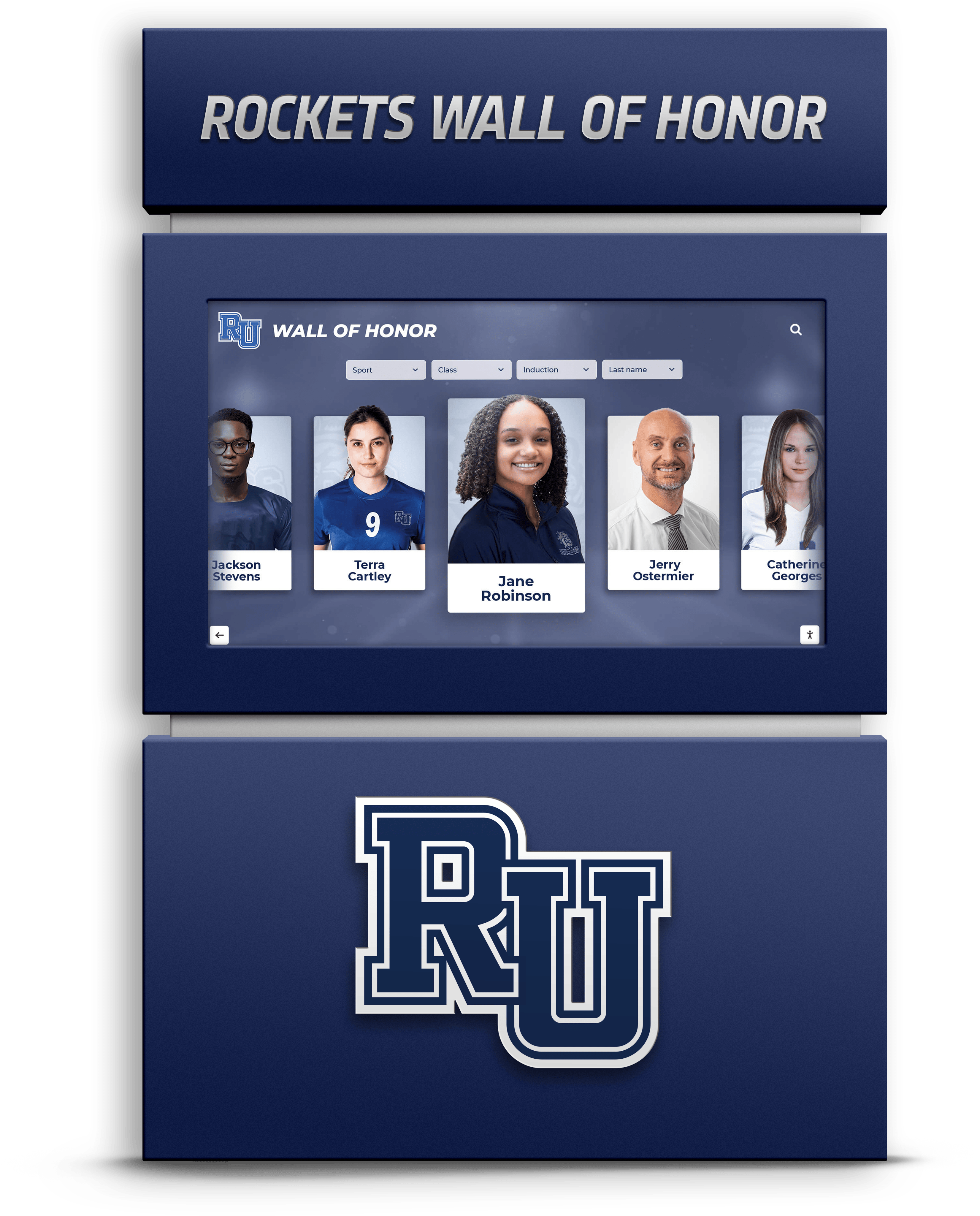
Addressing Common Concerns and Challenges
Organizations implementing fallen soldier recognition encounter predictable obstacles that proven approaches address effectively.
Budget Limitations
Cost Concerns: Many organizations worry about recognition costs, particularly for comprehensive digital systems. Strategies for addressing budget constraints include phased implementation starting with essential features and expanding over time, grant applications to foundations supporting military recognition or community heritage, fundraising campaigns specifically for memorial recognition, in-kind donations of technology, installation, or content development services, and partnership with other organizations sharing commemoration goals.
Long-Term Value: While initial investment appears significant, compare against perpetual nature of recognition and ongoing costs of traditional approaches (engraving, stone maintenance, periodic expansion). Digital solutions often prove more cost-effective over decades of service.
Research Gaps and Missing Information
Incomplete Records: Organizations frequently discover incomplete information about fallen service members. Strategies include publishing information requests through community media and veterans organizations, contacting families through genealogical research and social networks, accepting incomplete profiles with clear notation that additional information is sought, and systematically updating profiles as new information emerges.
Verification Challenges: Sometimes service or casualty status proves difficult to verify conclusively. Establish evidentiary standards (official records preferred, family testimony accepted with appropriate documentation, multiple corroborating sources for ambiguous cases) preventing inclusion of unverified individuals while not setting standards so high that legitimate casualties are excluded.
Geographic Dispersion
Multiple Locations: Organizations with multiple facilities or communities may need recognition in several locations. Digital platforms excel at this through consistent online platforms accessible everywhere, networked physical displays showing identical or coordinated content, mobile applications enabling portable commemoration, and QR codes on existing memorials linking to comprehensive digital content.
Balancing Recognition Categories
All Service Members vs. Fallen Only: Organizations must decide whether memorials exclusively honor fallen soldiers or include all who served. Arguments exist for both approaches. Exclusive fallen soldier recognition emphasizes ultimate sacrifice’s uniqueness. Comprehensive recognition including living veterans provides broader community celebration while distinguishing fallen through special designation or separate section.
Most organizations find that separate recognition programs—one for all service members, another specifically for fallen heroes—best serves both purposes without dilution.
Organizations implementing these practices benefit from understanding employee recognition display frameworks that translate to memorial contexts with appropriate reverence adjustments.
The Future of Fallen Soldier Recognition
Recognition technology continues evolving with emerging capabilities promising enhanced commemoration and expanded engagement.
Virtual Reality and Immersive Experiences
VR technology enables immersive memorial experiences including virtual cemetery visits for distant families, recreated historical settings showing where service members served, interactive battles or operations education contextualizing sacrifice, and immersive storytelling bringing fallen soldiers’ experiences to life respectfully.
While currently limited by technology access and cost, VR memorial experiences will likely become more common as technology matures and becomes accessible.
Enhanced Multimedia and Oral History
Advancing technology enables increasingly sophisticated commemoration including AI-enhanced historical photographs restoring damaged or low-quality images, 3D-scanned artifacts from service members’ lives and military careers, comprehensive oral history programs recording Gold Star family memories, and spatial audio creating immersive memorial soundscapes.
Global Accessibility and Translation
Future recognition platforms will likely feature machine translation enabling global family access regardless of language, international collaboration connecting memorials across countries honoring shared sacrifice, digital preservation ensuring perpetual access across technological change, and blockchain-based verification providing tamper-proof authentication of service records and sacrifice.
Integration with Genealogical Research
Growing interest in genealogy creates opportunities for connection between family researchers and fallen soldier recognition through DNA verification for unidentified remains, genealogical database integration helping families discover service member ancestors, collaborative family tree development documenting military service across generations, and hereditary organization connections linking descendants with fallen ancestors’ recognition.
Conclusion: Preserving Sacrifice for Perpetuity
Fallen soldiers gave their lives—their futures, their dreams, their families—in service to nations and principles they deemed worth the ultimate sacrifice. This extraordinary gift demands recognition matching its magnitude: comprehensive, dignified, accessible, perpetual commemoration ensuring their sacrifices inspire generations yet unborn.
Traditional stone and bronze memorials served honorably when no alternatives existed. They remain symbolically powerful and emotionally resonant for many families and communities. But modern technology now enables recognition that surpasses physical limitations through unlimited capacity honoring every fallen service member without space constraints, rich multimedia capturing complete lives and service rather than bare facts, accessible commemoration reaching distant families and enabling perpetual connection, easy updates maintaining accuracy and completeness perpetually, educational integration helping younger generations understand sacrifice, and discovery tools enabling personal connections with fallen heroes’ stories.
For communities honoring local heroes, schools remembering fallen alumni, veterans organizations preserving military legacy, or any institution committed to meaningful fallen soldier recognition, solutions like those from Rocket Alumni Solutions provide specialized platforms designed specifically for military commemoration—combining unlimited capacity with comprehensive storytelling, dignified presentation with accessible operation, and powerful technology with appropriate reverence.
Every fallen soldier’s sacrifice deserves remembrance. Every family deserves the comfort of knowing their lost loved one is honored appropriately. Every generation deserves connection with those whose sacrifices secured the freedoms they enjoy. Modern fallen soldier recognition makes these aspirations achievable—creating comprehensive, perpetual tributes that honor the ultimate sacrifice with the dignity, depth, and accessibility it demands.
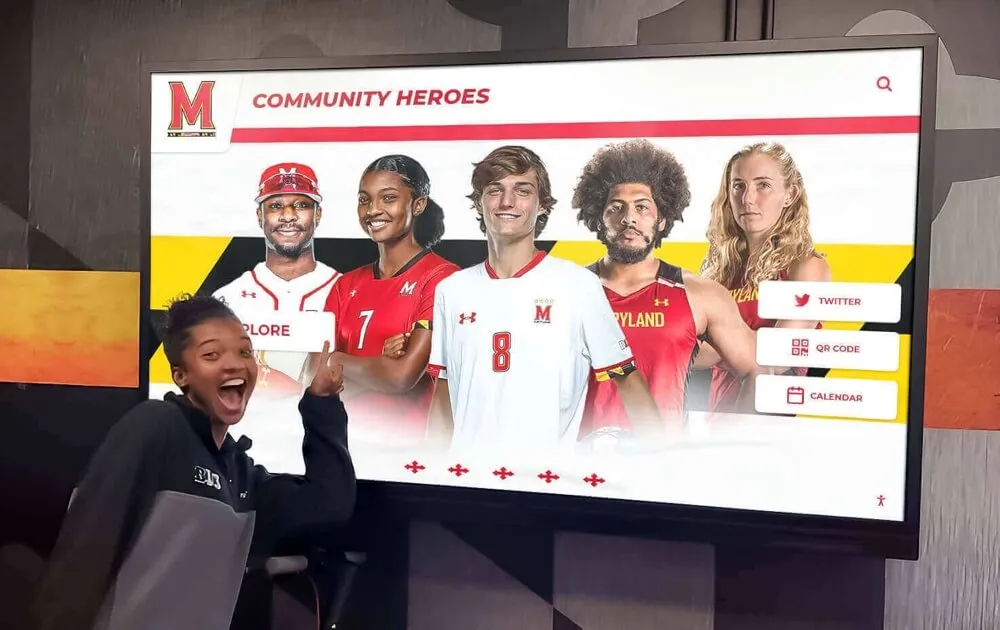
The men and women who never returned from military service gave everything. They deserve recognition that gives everything back—preserving their memories, honoring their families, educating future generations, and ensuring that their ultimate sacrifice remains visible, understood, and valued for as long as grateful nations endure. Modern recognition technology makes this perpetual commemoration possible, transforming how we honor fallen soldiers while ensuring no hero is forgotten and no sacrifice goes unremembered.
